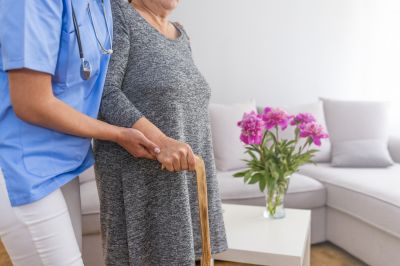Top-Rated Products for Elderly-Friendly Renovation Projects
Identify essential renovation items that promote safety and ease of use for seniors aging in place.
 Renovating living spaces for elderly individuals involves thoughtful planning and selecting appropriate products that enhance safety, accessibility, and comfort. This process often includes installing supportive fixtures, modifying layouts, and choosing specialized equipment to accommodate mobility and health needs. Properly designed renovations can help promote independence and reduce the risk of accidents within the home environment.
Renovating living spaces for elderly individuals involves thoughtful planning and selecting appropriate products that enhance safety, accessibility, and comfort. This process often includes installing supportive fixtures, modifying layouts, and choosing specialized equipment to accommodate mobility and health needs. Properly designed renovations can help promote independence and reduce the risk of accidents within the home environment.
Top Overall Option
Universal Support Grab Bar System
A versatile grab bar system designed for multiple locations within the home, offering adjustable lengths and secure mounting options. Its sturdy construction provides reliable support and stability, making it suitable for bathrooms, hallways, and stairways. Easy to install and maintain, this system can be customized to fit various spaces and user needs.
Types of Products For Elderly Renovation Service
Grab Bars and Handrails
Installed in bathrooms, stairways, and hallways to provide support and stability during mobility activities.
Walk-in Showers and Accessible Bathtubs
Designs that eliminate the need to step over high tub walls, reducing fall risk and increasing ease of use.
Raised and Comfort Toilets
Toilets with increased height and support features to facilitate easier sitting and standing.
Non-slip Flooring
Surface materials and treatments that reduce slipperiness, especially in wet areas like bathrooms and kitchens.
Adjustable and Ergonomic Furniture
Furniture designed for comfort and ease of transfer, including recliners, beds, and chairs with supportive features.
Lighting Solutions
Bright, motion-activated, or dimmable lighting options to improve visibility and safety.
Stair Lifts and Platform Lifts
Motorized devices that assist with traversing stairs or elevating mobility across different levels.
Wider Doorways and Threshold Modifications
Structural adjustments to improve access for wheelchairs and walkers.
Smart Home Automation Devices
Systems that allow remote control of lighting, temperature, and security for added convenience.
Mobility Aids
Walkers, canes, and rollators designed to support balance and movement.
Emergency Alert Systems
Devices that enable seniors to call for help quickly in case of emergencies.
Kitchen Modifications
Accessible countertops, pull-out shelves, and lever-style faucets to facilitate cooking and daily tasks.
Door and Faucet Levers
Lever-style handles that are easier to operate than traditional knobs.
Visual and Hearing Aids
Assistive devices to enhance sensory perception within the home environment.
Comfortable Support Pillows
Specialized pillows to improve posture and reduce discomfort during rest.
Doorbell and Intercom Systems
Easy-to-hear and operate communication devices for safety and convenience.
Popular Choices
Multiple grab bars installed in bathrooms and hallways for added safety.
Complete shower solutions designed for easy access and safety.
Toilet seats with height adjustments for easier sitting and standing.
Textured mats to prevent slips in wet areas.
Comfortable chairs with easy-to-use adjustments for relaxation and support.
Lighting systems that activate automatically when movement is detected.
Motorized lifts to assist with navigating stairs safely.
Structural modifications to improve wheelchair accessibility.
Voice-activated systems to control various home functions easily.
Supportive devices designed to aid walking and balance.
Accessible devices for quick emergency assistance.
Lever-style or touchless faucets for easier operation.
Handles that require less grip strength and are easier to operate.
Devices that assist with hearing in various home settings.
Ergonomic pillows designed to support posture during rest.
Video-enabled intercom systems for visitor identification and communication.
A key aspect of elderly renovation is addressing mobility challenges by creating barrier-free pathways and installing features such as ramps, wider doorways, and non-slip flooring. These modifications ensure easier navigation throughout the home, minimizing fall hazards and facilitating daily activities. Additionally, integrating assistive devices like grab bars, handrails, and adjustable furniture can provide added stability and support.
Lighting plays a crucial role in elderly-friendly renovations. Bright, well-placed lighting reduces shadows and improves visibility, which is vital for preventing trips and falls. Smart lighting systems that can be controlled remotely or automatically turn on when motion is detected are increasingly popular. Furthermore, bathroom and kitchen upgrades often include walk-in showers, raised toilets, and accessible sinks to enhance usability and safety.
Choosing the right products for elderly renovation requires careful consideration of durability, ease of use, and compatibility with existing spaces. Consulting with professionals can help ensure that modifications meet safety standards and personal needs. Properly implemented, these renovations can significantly improve quality of life, offering comfort and peace of mind for both seniors and their caregivers.
Key Buying Considerations
- Assess the specific mobility and safety needs of the individual to select appropriate products.
- Ensure products are rated for durability and weight capacity suitable for the user.
- Look for ease of installation or professional assistance if needed.
- Prioritize non-slip materials and surfaces in high-risk areas like bathrooms and kitchens.
- Consider adjustable features to accommodate changing needs over time.
- Check compatibility with existing home infrastructure and layout constraints.
- Evaluate the ease of operation, especially for users with limited grip strength or dexterity.
- Opt for products with clear instructions and minimal maintenance requirements.
- Ensure safety features meet relevant standards and regulations.
- Think about the overall aesthetics to maintain a comfortable and inviting environment.
- Incorporate smart technology where appropriate for added convenience and control.
- Review user feedback and ratings to gauge real-world performance.
- Consider budget constraints while balancing quality and functionality.
- Plan for future modifications to allow for ongoing adjustments as needs evolve.
- Consult with healthcare professionals or specialists for personalized recommendations.
